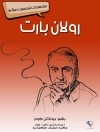John Polidori’s novella
The Vampyre (1819) is perhaps ‘the most influential horror story of all time’ (Frayling). Polidori’s story transformed the shambling, mindless monster of folklore into a sophisticated, seductive aristocrat that stalked London society rather than being confined to the hinterlands of Eastern Europe. Polidori’s Lord Ruthven was thus the ancestor of the vampire as we know it. This collection explores the genesis of Polidori’s vampire. It then tracks his bloodsucking progeny across the centuries and maps his disquieting legacy. Texts discussed range from the Romantic period, including the fascinating and little-known
The Black Vampyre (1819), through the melodramatic vampire theatricals in the 1820s, to contemporary vampire film, paranormal romance, and science fiction. The essays emphasise the background of colonial revolution and racial oppression in the early nineteenth century and the cultural shifts of postmodernity.
Tabella dei contenuti
Foreword: Polidori revisited – Christopher Frayling
Part I: The birth of The Vampyre
1 Introduction – Sam George and Bill Hughes
2 Phantasmagoria: Polidori’s The Vampyre from theatricals to vampire- slaying kits – Sam George
3 A séance in Bristol Gardens: Reassessing The Vampyre – Fabio Camilletti
4 Byromania: Polidori, fandom and the Romantic vampire’s celebrity origins – Harriet Fletcher
5 Rebellion, treachery, and glamour: Lady Caroline Lamb’s Glenarvon, Polidori, and the progress of the Romantic vampire – Bill Hughes
6 Sexual contagions: Romantic vampirism and tuberculosis; or, ‘I should like to die of a consumption’ – Marcus Sedgwick
7 The Vampyre, Aubrey, and Frankenstein – Nick Groom
Part II: The legacy of The Vampyre
8 From lord to slave: Revolt and parasitism in Uriah Derick D’Arcy’s The Black Vampyre – Sam George and Bill Hughes
9 ‘But if thine eye be evil’: Tropes of vision in the rise of the modern vampire – Ivan Phillips
10 ‘Knowledge is a fatal thing’; or, from fatal whispers to vampire songs: Breaking Polidori’s oath in The Vampire Chronicles and Byzantium – Sorcha Ní Fhlainn
11 ‘The deadly hue of his face’: The genesis of the vampiric gentleman and his deadly beauty; or, how Lord Ruthven became Edward Cullen – Kaja Franck
12 Vampensteins from Villa Diodati: The assimilation of pseudo- science in twenty-first-century vampire fiction – Jillian Wingfield
Afterword: St Pancras Old Church and the mystery of Polidori’s grave – Sam George
Appendix 1 John William Polidori, The Vampyre
Appendix 2 George, Lord Byron, ‘A Fragment’
References
Index
Circa l’autore
Sam George is Senior Lecturer in Literature at the University of Hertfordshire












